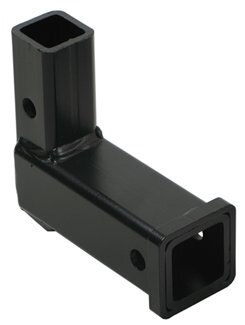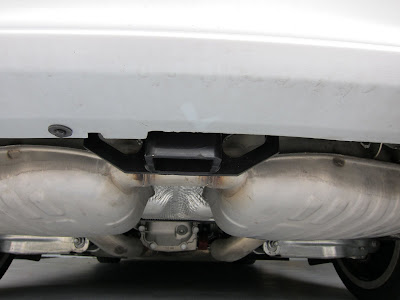I am not sure why I decided to make a garden this year, but something I read or saw a few months ago must have hooked me on the idea. Rather than digging up and tilling a section of the yard, I decided to build a raised container garden. I've seen some container garden kits in
gardeners.com, and they have even had some on display at my local Lowe's. Costco was even stocking a kit (more elaborate than normal, even)!
Not really being sure how large it should be, how deep it should be, if I should buy a kit or build...I went in search of a book to to provide some baseline knowledge. I came across Mel Bartholomew's
Square Foot Gardening book:
As far as I can tell, this seems to be the bible of raised gardening. I've seen many references to the book on various online forums, and there is even a
squarefootgardening.com. Mel lists his preferred soil mix to use in the garden, and the local hippie (and extremely legit) nursery,
The Natural Gardener (you might have heard the owner's weekend radio show on KLBJ), sells
soil conforming to this mix. For some reason (maybe because these gardens tend to be small), The Natural Gardener does not sell the SFG mix in bulk; they only sell it prebagged. It turns out to be
far cheaper to buy soil in bulk than prebagged. There is actually a nearly-as-cheap-as-bulk option at The Natural Gardener: bagging it yourself. Check out the per-yard cost of buying
Hill Country Garden Soil (what I ended up using):
- Delivered, by the yard: $41.50 / yard
- Bagging yourself: $3.50 per 10 gallon bag (bags are $0.50 each): (1 cubic yard = 202 gallons) ~$70
- Buying bags: 2 cubic feet per bag, I think $7 / bag. (1 cubic yard = 27 cubic feet) ~$95
Laura and I had to rent a Home Depot truck to get the materials for the box (more on that later) to the house, and so stopped by the nursery on the way home and bagged up the soil we needed.
As for the box: the 'standard' box in the SFG book is a 4'x4' box, 6" deep. That is the most basic configuration. You can build it larger and/or deeper. The idea is to subdivide it using a grid on top into 16 individual square foot parcels, each potentially having a different thing growing in it. Going deeper than 6" allows for some additional possibilities (some vegetables need more depth, and all will apparently grow more vigorously in more soil). Mel's standard boxes are just cedar 4' boards, nailed together at the corners. He details several ways to trick out the box:
- Lining the bottom with chicken wire (to keep out burrowing rodents)
- Lining the bottom with landscape cloth (to keep out weeds)
- Covering the top with a chicken wire cap (to keep out birds, deer, dogs, cats, etc.)
- Building a PVC pipe 'covered wagon' top (to provide support for insulating cloth or netting)
- Building a rebar-anchored metal conduit pipe frame to anchor trellis netting (to provide support for vine plants, like tomatoes)
I needed some of these: some sort of netting or cap (to keep out Lucy & Ethel, as well as all of the birds that ate every one of the tomatoes I grew last summer in a
Topsy Turvy) and the landscape cloth (to keep weeds in the lawn underneath from getting into the garden from beneath). I also wanted it to be more than 6" deep to give versatility on what could be planted. I thought I would go somewhat larger than the standard 4'x4': perhaps 4'x8'. I thought that I'd go through the effort of assembling/building this once, and so I'd rather build big and potentially leave some lie fallow, rather than build a box that I wished was larger.
As far as buying a kit versus building my own: a quick look at the
gardeners.com listings revealed that nearly all kits (and definitely all of the ones I saw at Lowe's, and most of the Costco kit) were 6" deep. Going taller quickly ramped the cost such that it seemed building it myself would surely be cheaper. My favorite kit during my research was this one from
Naturalyards. It is pretty nice: easy assembly via pins at the corners, stackable to reach great depths (up to 33"), and with precut
Port Orford Cedar boards. It seems that 'Port Orford Cedar' is a bit of a misnomer: Port Orford Cedar is not cedar at all, but actually a type of cypress. It seems that this would be even more rot and water tolerant than the standard
Western Red Cedar boards that most everything else is made of. However, a 4'x8'x11" offering is $265...and that's just for the box (wood and corner pins).
In the end, I decided to build, but fancy it up a bit (and make construction easier) by buying aluminum box corners from gardeners.com:
12" Raised Bed Corners. I was then able to go to Lowe's and buy lumber to slot right into the corners' sleeves. Some kits use composite lumber (like the Trex decking composite lumber) to avoid rot issues entirely, but this turned out to cost a lot more than cedar...so I stuck with cedar. Because a box full of soil weighs a lot (the Hill Country Garden Soil I use was listed as ~1400 lbs / yard, and I had ~1.2 cubic yards in my box, so ~1700 lbs of soil), the information on the raised bed corners suggested using
in-line connectors to build a crossbar to keep the box edges from bowing out. I bought a pair of these 12" connectors to go with the 2 sets of 12" corners. I went to Lowe's and bought 7 2" (thick) x8' (long) x 6" (wide) cedar boards, and had them cut (they will do this in the store) all three boards in half: 4 segments to make the 8' runs on the long side of each box, and 3 to make the short ends of the box and the middle connector...and all of this times 2, as I need all of this over again (stacked) to make the box 12" deep. So: 14 4' segments in total, which we can get by cutting 7 8' boards in half.
I screwed all this together in the garage, building the overall box. It is possible to stain the wood to provide an additional measure of water resistance (and forestall the eventual decay of the wood by a bit longer...especially in a backyard with a sprinkler system like mine), but people generally just stain the outward-facing wood: it is what people see, and the (mostly-crunchy) people who build these boxes don't want any 'chemicals' on the inner (garden) facing wood (which would be in contact with their surely-organically-managed garden). The Naturalyards site actually lists several stain options that are known to be non-toxic in their
FAQ. I didn't stain mine at all. After assembling the box, I unrolled landscape fabric and had Jen and and Laura hold it in place while I stapled it to the frame, with a regular
PowerShot stapler. We then carried it to the back yard and put it in its resting spot: somewhere with full sun and in close proximity to the water faucet.
After building it and filling it with soil:
I actually needed slightly more than 4'x8'x1' (1.18 cubic feet, ~24 10 gallon bags), as the aluminum connectors made the overall length a few inches more than 8' (and the width a bit more than 4'). I ended up topping it off by buying three SFG mix bags at the store.
I bought the narrowest cedar boards that I could find and cut them to make the permanent square foot grid on the top. This is what happens when you are and idiot and don't drill a pilot hole first:
If you drill pilot holes, everything looks nice and clean, like this:
A closer look at the aluminum corners:
I used regular coated deck screws for all of the assembly. After finishing the grid, I started to lay out what plants would go where (with some help from Ethel). Most of the 32 squares were stocked with seedlings I purchased at The Natural Gardener or at Lowes, although a few (about 10 squares) were started from seed. Those are the 4 tomato plants I'm starting with:
After planting everything, it looked like this:
Now, to protect these things, I build a covered wagon style canopy. I bought 1/2" 10 foot long PVC pipe. It's quite flexible: I just put one end in a corner and bent it to the opposite corner. I did this for each end, and then one along the crossbar. I cut one additional 10' run of pipe and trimmed it so as to run along the top, lengthwise, joining the 3 curved pipes. I drilled small holes in each pipe to allow me to join the lengthwise pipe to the curve pipes with a short stainless steel bolt and stainless steel wing nut.
With the canopy in place, I needed to actually drape it with some sort of protective netting. I found a 14'x14' plastic web netting marketed as bird netting at Lowe's for about $5. I couldn't just drape it across the canopy and expect it to stay, so I bought several small stainless steel screw eyes. I put 2 per 4' segment along the perimeter. The screw eye almost completely circles back onto itself, but not quite: a small gap is left. I used this to hook the netting through the screw eyes, securing the net to the box's perimeter in this way. It is pretty easy to hook and unhook, which really is a must: I had to be able to get back into the garden later to harvest vegetables or weed squares without destroying the net. The net is pretty cheap and fragile, though, so I bought an extra. If enough squares on this one end up breaking so as to make it hard to keep it hooked on, I will just swap to a new net. After several weeks, it's holding tight. With the netting (which is hard to see, being very thin and black) on, the garden looks like this:

Here is a closer shot of one of the screw eyes:
That is pretty much how things stand as of today. Since the garden was planted early this month, the items (which I will probably detail in a later post) are definitely growing. I really wanted to plant mint (mojitos and such), but I'd heard it grows like crazy and might take over adjacent squares. I ended up buying a self-watering pot and planted
Kentucky Colonel Mint:
I later bought another of the exact same pot and planted a serrano (Jen loves her spice!).
I'm not done just yet: I also purchased a drip irrigation kit and associated timer to allow me to automate the watering of the garden. I picked up a
starter kit at Home Depot for pretty cheap (~$25), and then purchased a few extras a la carte (I needed more drip nozzles to handle all 32 squares). I hope to install it soon; if not this week, next. I'll have a post about that experience for certain! I'm hoping that once I get that set up and totally dialed in as far as the dripper positioning and the timer settings, I will be able to worry much less about watering (especially when traveling for work) and spend any garden time focused on the actual vegetables and herbs.




















